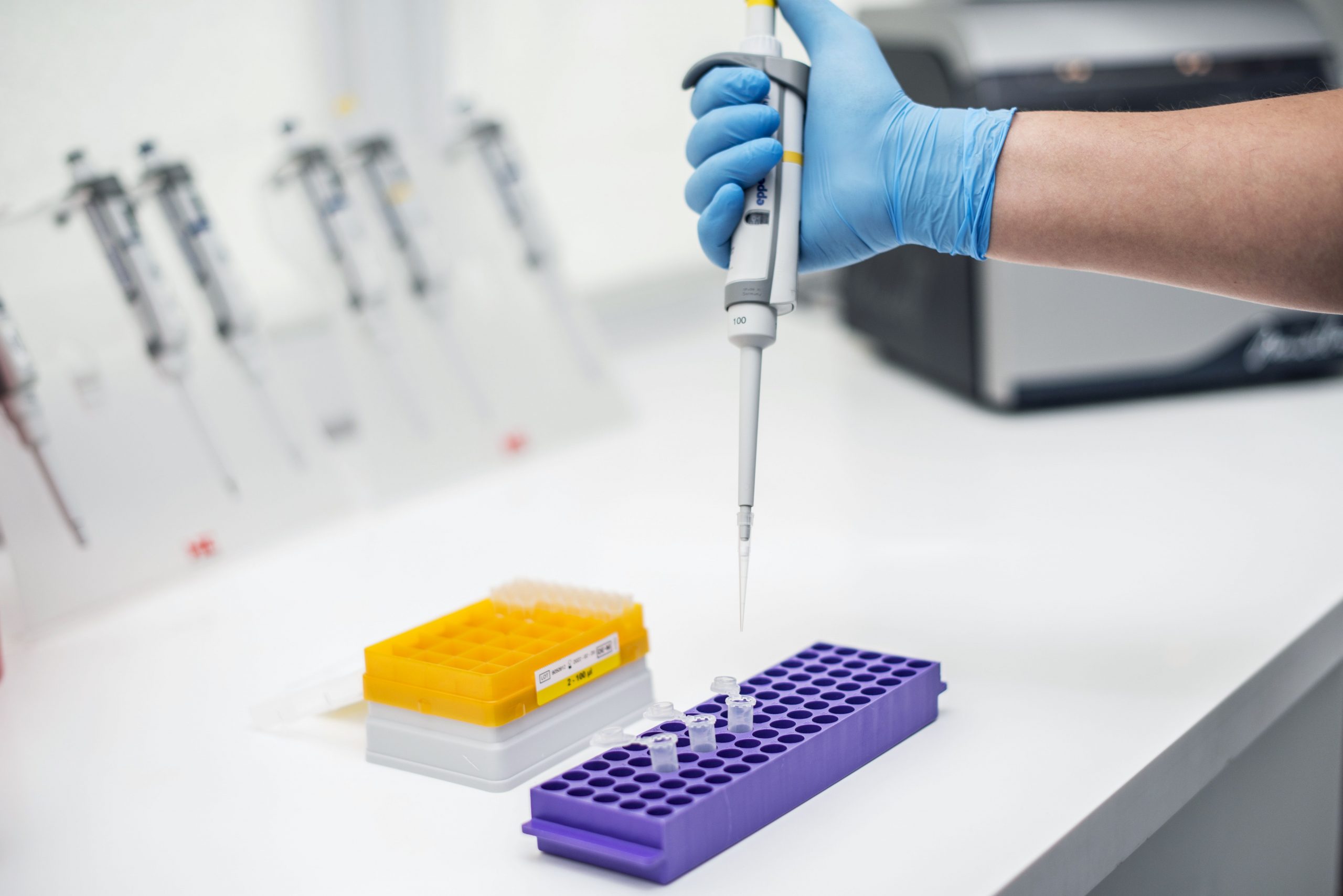We will contact you shortly to schedule a convenient appointment.
KIR and HLA-C tests
Diagnosis of habitual miscarriage and embryo implantation failure
KIR ( killer cell immunoglobulin-like receptors) are receptors belonging to the superfamily of immunoglobulin-like molecules. They are located on the surface of NK cells, or “natural killer cells” (NK cells). NK cells exhibit cytotoxicity against cells considered hostile by the body, i.e. cancer cells, virus-infected cells. NK cells are part of the innate immune system.
KIR receptors are responsible for regulating NK cell function. They are involved in activating or inhibiting their function. This is done as a result of interactions occurring between KIR receptor molecules and MHC class I major tissue compatibility complex proteins – in humans referred to as HLA ( human leukocyte antigens ). Inhibition or enhancement of NK cell activity as a result of interactions between KIR and HLA depends primarily on the structure of KIR receptors.

KIR and HLA-C testing – why should they be done together?
The interactions that occur between the KIR receptors of women’s NK cells located in the uterus and the HLA-C molecules found on the surface of germ cells are important in the early stages of pregnancy, during embryo implantation. Hence, it is recommended that KIR testing always be performed together with HLA-C testing.
Are you after miscarriages or failed IVF?
Make an appointment for a consultation and talk about KIR/ HLA-C testing
In the Gyncenter laboratory, polymorphism studies of KIR and HLA-C genes are performed using a molecular biology method called SSP PCR (Sequence Specific Priming Polymerase Chain Reaction). This is a method using polymerase chain reaction with primers specific to genes encoding KIR receptors or HLA-C molecules. In both tests, only those genes or their alleles that are present in the cells of a given patient are multiplied.
For what purpose is the KIR and HLA-C test performed?
Selected KIR receptors can impede normal embryo implantation and placenta formation. Identification of KIR genes and HLA-C alleles is therefore an aid in assessing the causes of infertility, particularly in couples with suspected immune infertility. KIR and HLA-C genotyping is also recommended in the diagnosis of the causes of habitual miscarriages and in failed IVF attempts.
What does the study look like?
KIR and HLA-C testing is performed from peripheral blood, or possibly other tissue. The tests do not require the patient to prepare in advance. The patient does not need to be fasting.
Patients after blood transfusion should wait 3 months, from the date of blood transfusion. Otherwise, the test results may be abnormal. In patients after bone marrow transplantation, tissue other than blood (e.g. fibroblasts, oral mucosal cells) is collected for the test.
Before collecting material for the test, the patient is asked to sign a declaration in which he/she agrees to perform molecular genetic testing.



